
Table of Contents
Arthritis of the fingers is an incurable, gradual breakdown in the normal anatomy of the joints of your fingers, mostly caused by a wear-and-tear degenerative process or an autoimmune reaction. It results in pain, stiffness, inflammation, swelling, and other symptoms that prevent normal use of your fingers.
Joints usually affected are:
- Metacarpophalangeal(MCP) joints. Where your fingers form joints with your hand.
- Proximal interphalangeal(PIP) joints. The joint at the middle of your fingers.
- Distal interphalangeal(DIP) joints. The last joint before your fingernails.
In this article, we’ll discuss the causes, diagnosis, symptoms, and treatment given in an attempt to manage the symptoms and slow down the progression of the disease.
What causes it?
The exact cause of the different types of arthritis may vary, but there are predisposing factors to the disease. Some of these are:
- Race: Whites happen to be more prone to arthritis than blacks or African Americans.
- Gender: If you are female, you’ll be more prone to rheumatoid arthritis. Osteoarthritis and psoriatic arthritis affect both genders equally.
- Body weight: The higher your body weight or, better still, your body mass index, the higher your risk of coming down with osteoarthritis.
- Age: With increasing age, your chances of developing osteoarthritis rise. Autoimmune diseases like rheumatoid arthritis could happen at any age, though.
- History of injury: Injuries often lead to arthritis in the long run, especially those that directly affect the joints.
- Gait: The term gait describes how you walk. An abnormal gait will result in undue stress on a joint, increasing your likelihood of developing arthritis.
- Infection: There are infections like osteomyelitis that affect the bones or lead to disabling conditions that affect joint health and trigger arthritis.
- Smoking: Smoking has been linked to autoimmune problems like psoriasis. About 30% of psoriatic patients go on to develop psoriatic arthritis. Smoking also reduces the effectiveness of some medications used in treating this form of arthritis.
- Familial factors: There is an element of familial disposition associated with arthritis. If you are from a family with a history of arthritis, you are more likely to come down with the disease. For this reason, you may have to avoid other factors that further increase your risk, like a high body mass index.
- Profession or job: Some types of work see you making frequent use of certain joints in a limb in stressful manners and at times in abnormal positions. Such frequent and stressful joint use may increase your risk of developing osteoarthritis or result in the flare-up of existing arthritis.
The common types.
Arthritis is a chronic condition, and the three common types are:
- Osteoarthritis.
- Rheumatoid Arthritis.
- Psoriasis arthritis.
Osteoarthritis in fingers.
Osteoarthritis is the most common arthritis. It usually targets the bigger joints in your body, mostly the weight-bearing ones, though it’s common to have it in your fingers too.
This condition starts with the gradual wear and tear of the articular cartilages that line the ends of the bones that form the joints in your finger(phalanges).
The cartilage allows the bones to slide smoothly against each other, thereby protecting them from the wear and tear associated with friction. In osteoarthritis, the cartilage gets worn out, thereby exposing the bones to friction. This ultimately leads to joint deformities and numerous other symptoms.
This process could take several years before certain symptoms begin to appear. However, it has no bodywide effect, may affect just a joint or two, and doesn’t put sufferers at risk of death. The pains and other associated symptoms can get unbearable, though.
Rheumatoid arthritis of the fingers
This is the result of a systemic autoimmune reaction whereby your body’s antibodies see your body tissues as foreign matter that must be attacked and destroyed. Rheumatoid arthritis of the fingers begins with an attack on the lining of the joints in your fingers.
Unlike osteoarthritis, it’s usually more widespread and attacks the joints on both sides of your body. The process takes several weeks or just a couple of months to manifest. Besides your fingers, it also attacks body organs.
With rheumatoid arthritis, there is an increased risk of death, unlike osteoarthritis, but it accounts for ten times fewer cases than the latter. You can look up how to distinguish between osteoarthritis and rheumatoid arthritis in our previous article.

Psoriatic arthritis of the fingers.
Like rheumatoid arthritis, psoriatic arthritis is also a chronic medical condition resulting from an autoimmune systemic reaction. It’s similar to the former in so many ways, but is still distinguishable on a couple of features.
Not everyone who has psoriasis goes on to develop psoriatic arthritis. Only about a third of people suffering from psoriasis eventually develop arthritis.
Diagnosis.
Diagnosis of finger arthritis is made through a combination of several means, which include:
Physical examination: You first have to get physically examined. Things like joint stiffness, pain, swelling, tenderness, joint sounds, affected fingers, presence of plaque, level of disability, etc, are checked and documented.
X-rays, CT scans, and MRI: These are used to check the affected internal tissues and the level of damage. Cartilage damage, reduction of joint spaces, presence of spur or osteophyte formation, and inflammation of the synovial membrane are observed with the use of these medical tools.
Blood tests: They are used to check for certain biomarkers that reveal what is or isn’t happening. These include tests for rheumatoid factor, erythrocyte sedimentation rate, C-reactive protein, etc.
How to tell which one you have?
It may not be easy to differentiate the three types of arthritis listed here at times. However, certain factors indicate which of them you may have. We covered a bit of this in a previous article that compared osteo and rheumatoid arthritis, and another one where we distinguished between rheumatoid and psoriatic arthritis.
Osteoarthritis.
- Osteoarthritis takes a relatively much longer time to develop than a systemic autoimmune disease like rheumatoid.
- It also has a more local effect rather than a systemic one. Only tissues around the joint are affected.
- It’s usually not associated with fever or flu-like symptoms.
- Your internal organs are spared.
- It isn’t symmetrical, meaning it usually doesn’t affect the same joints on your right and left fingers.
- X-rays or other medical imaging tests may reveal cartilage erosion at the start of symptoms and joint space narrowing.
- The stiffness you feel could get better in less than 30 minutes of activity.
- Blood tests should reveal the absence of rheumatoid factors and anti-cyclic citrullinated peptide antibodies. This also helps to distinguish osteoarthritis from arthritis, which results from autoimmune reactions like rheumatoid.
Rheumatoid arthritis.
It is very similar to psoriatic arthritis and may not be easily distinguishable at certain stages of the disease. However, there are a few differences.
- There is the presence of rheumatoid factor or anti-cyclic citrullinated peptide antibodies in the blood, which is shown in blood tests.
- During a physical examination, plaque is not expected to be found on the skin if you are only suffering from rheumatoid arthritis.
- X-rays are expected to reveal an inflamed synovial membrane that surrounds the joints.
- Symptoms usually manifest within several weeks or a few months.
Psoriatic arthritis.
- With psoriatic arthritis, blood tests should show the absence of rheumatoid factors.
- There may be thick, silvery, scaly, inflamed skin called plaques, which is physically observable.
- X-rays may reveal inflammation of the insertion points of your tendons and ligaments to your bones. This is called enthesitis.
What does it feel like?
Arthritis of the fingers of any type ultimately reduces the usefulness of your hands. It prevents you from performing daily tasks you ordinarily used to do with ease and comfort. This is just one of the outcomes you don’t just feel but know for a fact.
You feel several other symptoms, some of which are listed below:
- Stiffness of the finger joints: This happens especially in the morning or after a period of inactivity. It eases off when you get active and start to use your fingers.
- Joint swelling: This is normally due to fluid collection in the joint and or surrounding tissues.
- Reduced range of motion in the fingers: As arthritis progresses, you may no longer be able to fully bend or straighten your fingers as you used to.
- Pain: Your joints become painful, which may reduce after a period of movement.
- Inflammation: The components of inflammation( Pain, swelling, warmth, and redness) are felt. Some of them have already been mentioned because they can also happen in the absence of other components. For instance, there can be pain without warmth.
- Abnormal sounds on moving your finger, also called crepitus: This includes the popping, grating, or grinding sound you may hear when the joint is moved. For a large joint like the knees, I usually place my palm firmly over them when performing a physical examination to feel for this while moving the joint, but a lot of times, the sound is quite audible.
- Deformed finger joint: As arthritis progresses, the finger could start losing its normal anatomy or shape. Deformities such as swan neck, ulnar drift, and hitch-hiker’s thumb occur in advanced cases of arthritis.
- Formation of nodules at finger joints: These are lumps of inflamed tissue felt under the skin in a rheumatoid arthritic joint.
- Tenderness: It could get so painful that touching the joints also elicits pain.
- Scaly, silvery, thick, and inflamed skin: This is a visible sign of psoriasis arthritis.
- Loss of hand grip strength: You’ll find out you may no longer be able to hold something as firmly as you used to. This may come as a result of the combination of pain, reduced range, swelling, and finger deformities.
- Abnormal fingernails: Your nails could change from a healthy coloration and may also lift from the nail bed.
Early arthritis in fingers.
The first signs you may experience with arthritis of the fingers may vary among individuals and is also influenced by the type of arthritis.
Generally, at the early stage, it’s common to feel any one or a combination of the following symptoms in the fingers:
- Pain,
- Swelling, and
- Stiffness.
You may have pain without stiffness, both pain and stiffness, or all three early signs.
The treatment.
Treatment of arthritis of the fingers is aimed at:
- Reducing the progression of the disease,
- Reducing stiffness,
- Reducing pain and tenderness,
- Maintaining or improving the range of motion of affected fingers, and
- Improving the usability of affected fingers for everyday tasks.
The choice of a treatment plan is determined by several factors, which include:
- The stage of the disease at the time of intervention,
- Your tolerance to the medications of choice,
- The presence of other underlying medical conditions or comorbidities,
- Your level of use of the fingers or your job description,
- The number of joints affected,
- The diagnosis or type of arthritis,
- The level of experience or preferred choice of treatment of your healthcare provider.
Medications.
The non-steroidal anti-inflammatory drugs are often the first line of medical treatment intervention in cases of arthritis of the fingers. There are glucocorticoids which are given orally, or injected into the joints, or intravenously to relieve symptoms. The relief you get from steroids could last for several months.
For systemic diseases like psoriatic and rheumatoid arthritis, there is a group of effective drugs called disease-modifying drugs. They are used in slowing the progression of the disease and the prevention of joint damage. Below is a list of popular treatment options.
- Non-steroidal anti-inflammatory drugs(NSAIDs),
- Corticosteroids,
- Conventional synthetic disease-modifying anti-rheumatic drugs(csDMARD),
- Biologic disease-modifying anti-rheumatic drugs(bDMARD),
- Janus kinase inhibitors(JAKI) or targeted synthetic disease-modifying anti-rheumatic drugs(tsDMARD), and
- Phosphodiesterase-4 inhibitor(PDE4)
There are yet no drugs that may halt the progression of osteoarthritis and prevent joint damage. Nonetheless, there are a couple of non-pharmacological means of managing the disease apart from drugs, as you’ll see below. There are clear recommendations for the effective treatment of arthritis that results from autoimmune reactions like rheumatoid arthritis and psoriatic arthritis, as outlined in our previous article.
Kindly keep in touch by signing up for our newsletter:
Vitamins, minerals, and supplements.
There is no research proving the efficacy of supplements in slowing down the progression of arthritis of the fingers. However, I’ve found Glucosamine and chondroitin supplements or creams effective in achieving the following objectives in my patients:
- Pain relief,
- Reduction in crepitus, possibly due to improved lubrication of the joint,
- Improvement in functional use of affected joints,
- Improved hand grip strength, possibly as a direct result of reduced pain.
For the above reasons, I have no hesitation prescribing them for use in arthritis patients, including those with arthritis of the fingers. Though they are supplements, you may still need a prescription from your healthcare provider before using them to avoid drug interactions with other medications you may be taking.
A study published in the Journal of Clinical Drug Investigation has shown it works better when in combination with other substances like methylsulfonylmethane(MSM) than in isolation.
Be that as it may, where the limitation in range of motion results from joint deformities, muscular weakness, and marked stiffness, I am unsure if there can be an improvement in range purely from the use of chondroitin and glucosamine supplements in the absence of other interventions.
Other substances in this category that have been found to help with the management of arthritis are:
Methylsulfonylmethane(MSM): It’s anti-inflammatory and helps to reduce pain after a period of use. It’s an important component of many anti-arthritis supplements.
S-adenosyl-L-Methionine(SAMe): A Study published in the Journal of Medical Science and Clinical Research suggests that SAMe tries to prevent osteoarthritis by protecting the cartilage from destruction and also increases chondrocyte production in the body. Chondrocytes are cartilage-building cells in your joints.
Hyaluronic acid(HA): It’s another anti-inflammatory substance that not only plays a role in the development of cartilage and bones but also helps with joint lubrication, which is vital for joint health.
Vitamin A: It has anti-inflammatory properties, but also helps in the normal growth of your bones.
Vitamin E: Like the others, it helps to tackle inflammation. Most importantly, a study in Experimental and Therapeutic Medicine suggests vitamin E can inhibit the progression of osteoarthritis. This important vitamin can be naturally obtained from peanut butter and avocados.
Vitamin K: A study published by the International Union of Biochemistry and Molecular Biology (IUBMB) has shown it is effective as an antiproliferative agent against rheumatoid arthritis synovial cells, and it also has anti-osteoporotic action. Eggs are a good source of this vitamin.
Omega-3 fatty acids: This is a group of polyunsaturated fatty acids. They help to reduce inflammation in arthritis, especially the Eicosatetraenoic and Docosahexaenoic fatty acids in the group.
Physiotherapy.
Physiotherapists are healthcare specialists who play a huge role in managing the arthritis of your fingers. They help you manage most of the symptoms arthritis presents with. Their intervention is expected to:
- Relieve your pains,
- Prevent or reduce the loss of the range of movement of your fingers,
- Reduce the swelling,
- Reduce your dependence on drugs in managing most of the symptoms,
- Prevent or reduce the loss of function of your fingers,
- Restore your hand grip strength,
- Reduce the extent of deformities,
- Combat joint stiffness,
- Give pre- and post-surgery physiotherapy, where surgery becomes necessary, etc
Occupational therapists are also very important in the scheme of things. They help you adapt by training you in new ways of doing things that suit your medical condition.
Exercises for arthritis of the fingers.
Finger exercises are part of the means employed by physiotherapists and occupational therapists to achieve their professional objectives. Various categories of exercises are employed, which include some of the following:
- Passive mobilization of affected joints,
- Assisted-active exercises,
- Free active exercises, and
- Resisted active exercises.
Passive mobilization is a maneuver carried out by the physiotherapist in line with his or her clinical judgment. It could help combat finger joint stiffness and loss of range of motion. Other categories of exercises may be done in the following ways:
- Ball or object squeezes: This could be done by squeezing pit balls or any object of the desired shape that can be squeezed.
- Fist-making: You make a fist and hold the fingers firmly in that position as much as possible, then release to straighten the fingers before repeating the process.
- Holding sheets between your fingers: Push a sheet of paper or a piece of material between your fingers and hold it in place between your fingers. Then pull on the object slightly with the other hand, but try to prevent it from slipping off your fingers with a firm hold. Relax and repeat as many times as desired.
- Lifting fingers off a surface: Place your Palm flat on a surface and try to lift your fingers off the surface one at a time.
- Bending of thumbs: Bend your thumb towards your palm, straighten it, and repeat a couple of times.
- Picking: Place small objects on a surface and try to use the tips of your fingers to lift and transfer them from one spot to another.
- Fingers spreading: Place your fingers on a flat, smooth surface and practice spreading them apart as much as you can, and then bring them back together till their sides touch. Repeat as many times as desired. This can also be done in mid-air.
- Thumbs up: Do thumbs up a couple of times as you would on a good day.
Your physiotherapist may have you do these exercises after the immersion of the affected hand in a wax bath. He or she can also recommend how many repetitions you should do on each recommended exercise.
Orthotic Devices.
These are splints used to stabilize affected fingers to reduce pain and compression gloves to combat swelling. They have to be removed from time to time to exercise the fingers otherwise, their use could promote weakness of the affected fingers.
Surgery.
Surgery is usually the last option in the management of arthritis of any type in any part of the body, including the fingers. It is normally considered at the point when there is marked deformity and no other intervention gives you meaningful relief from the symptoms.
Below are some of the surgical interventions that can be carried out due to arthritis in the fingers.
Bone osteophyte or spur removal.
The surface of bones is usually smooth. Arthritis triggers a lipping of bone on the once smooth surfaces, thereby creating rough edges that rub against surrounding tissues. This is partly responsible for much of the pain and inflammation you feel.
This surgery aims to remove these bony outgrowths. It’s hoped you’ll feel better than you were before this operation, with reduced severity and manageable symptoms.
Joint fusion.
This process, also called arthrodesis, is used to join or fuse an arthritic joint, and it’s common to have it done on the distal interphalangeal joint (DIP). With a fusion, no joint exists there anymore. This eliminates many of the symptoms.
Joint replacement surgery.
This is also called arthroplasty and involves replacing part or all of a joint with artificial parts or components. It’s common to have this procedure carried out in the metacarpophalangeal joints(MCP) and proximal interphalangeal joints(PIP).
Lifestyle.
This is multidimensional and involves you playing an active, disciplined role toward the alleviation of your sufferings. For instance, you may have to stop or cut down on certain foods that worsen the inflammation, like French fries, alcohol, fatty foods, and red meat.
You may be advised to eat more foods that could help reduce your symptoms, like mushrooms, turmeric, and dark chocolate.
Doing things that won’t put a lot of stress on the affected fingers is also important. For some people, this could mean a shift in a job description or getting someone else to do certain parts of that job.
























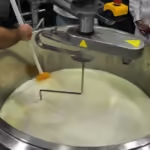


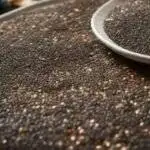













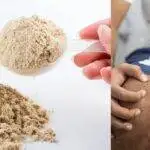



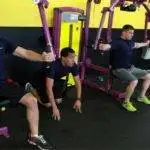


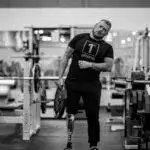


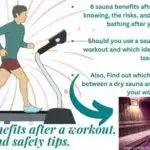



















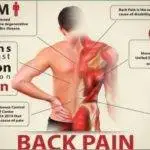
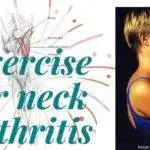

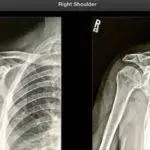

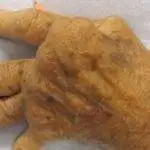

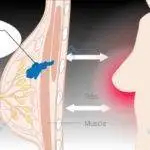
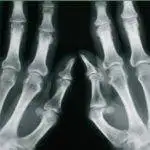
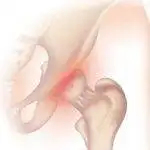
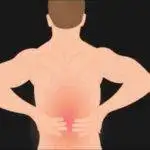
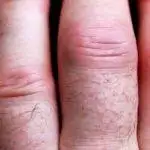





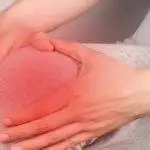
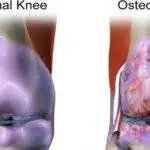
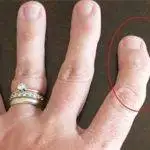

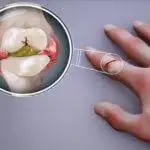












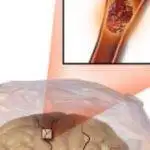
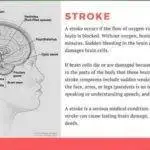
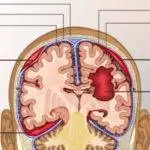
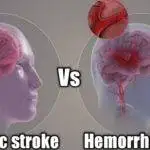
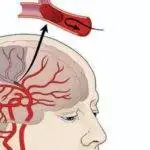














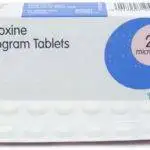


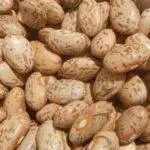









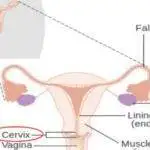
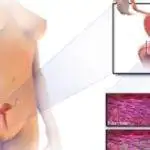

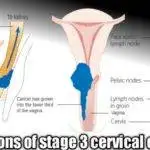
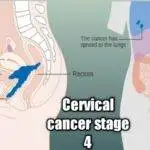
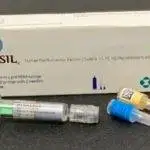


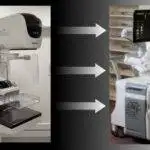
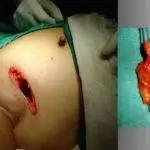

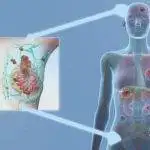


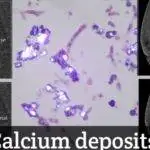
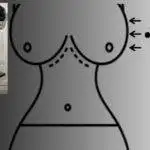

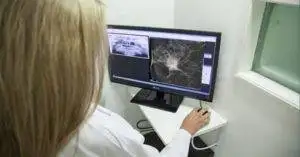
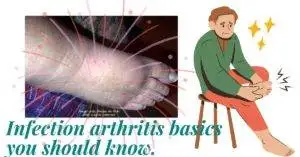
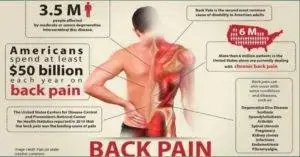

A very clear explanation. Was truly informative. Your website is very useful. Thanks for sharing.